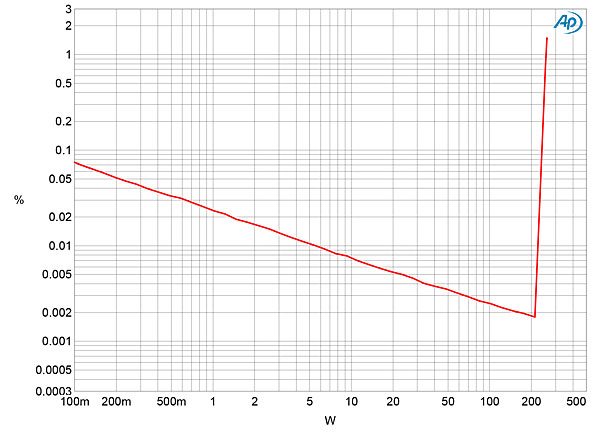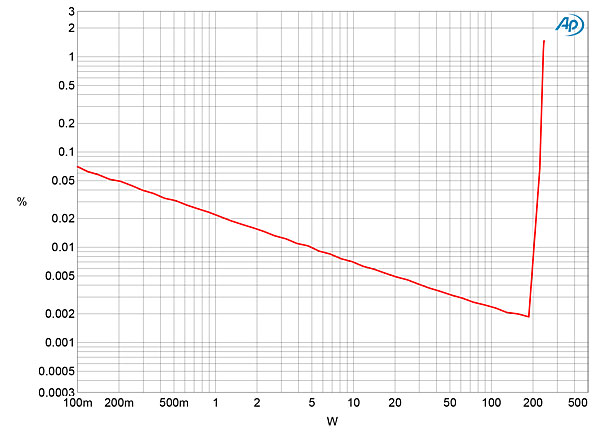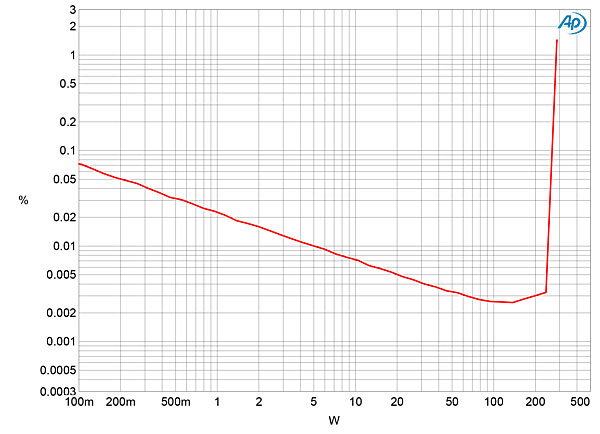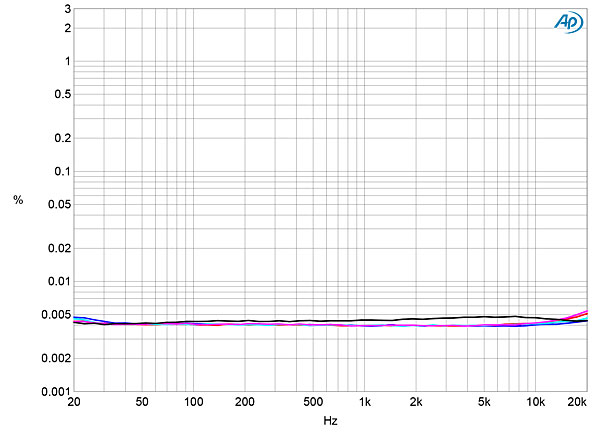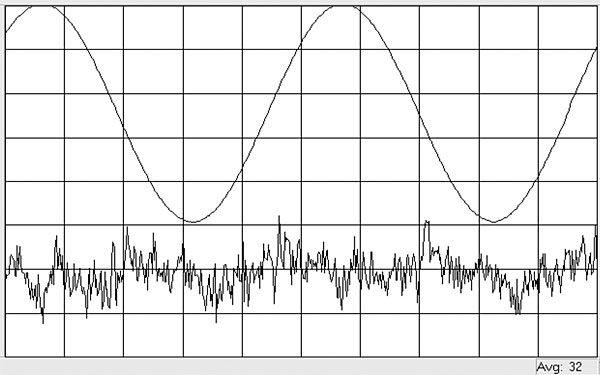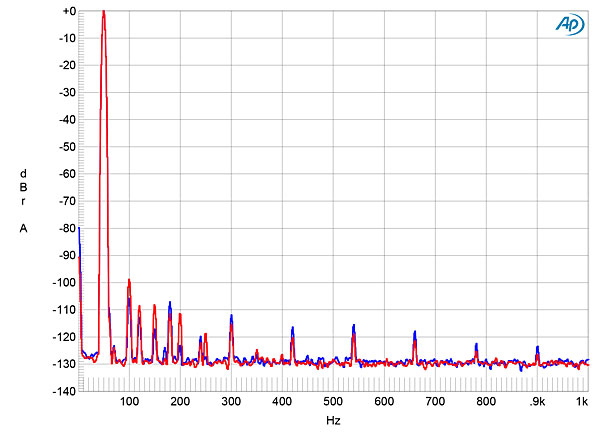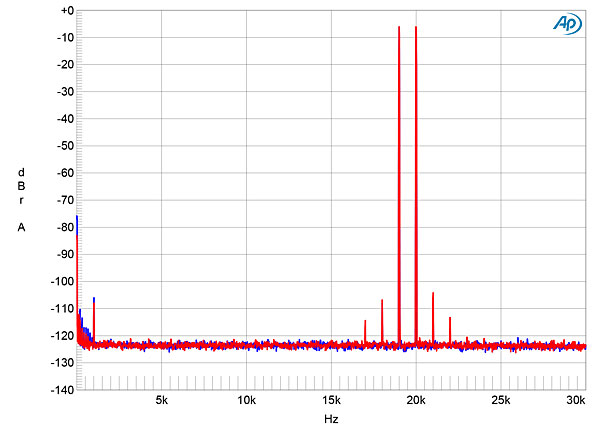Why not visit a McIntosh dealer with your favorite Classical music and judge for yourself?
is McIntosh known for good dynamics?
I'm mainly a classical listener. I love good dynamics and dynamic resolution. For instance, in classical music there is a lot of musical expression that comes through subtle dynamic changes from one phrase to the next. There are also sudden louds, which the equipment should present as having startle impact. There are also sudden quiets, which should have a "compelling" sense to them.
I'm wondering if the McIntosh signature sound is known for good dynamics and microdynamics.
@magon , Mac is a respected brand. I have not had the pleasure of owning any of their equipment. That being said, I think you should be considering what speaker you are pairing with. Some speakers need gobs of power, like MBL, some need less. Some amps work better with certain brands of speakers. I own Vandersteens, and Ayre seems to work extremely well. Long story short, much depends upon the whole system, rather than just one component. HTH Bob |
I’m just trying to get a sense of what might be wrong (if anything) with the MHA200 headphone amplifier I just picked up from a private seller. It’s very flat dynamically and I’m wondering if it needs new tubes, needs to burn in, or whether this is just the McIntosh sound. There's not much headphone activity here so I thought it would helpful to get a sense of the McIntosh signature sound overall. |
+1 Correct. Mac is highly regarded. Their house sound is very midrange and bass heavy. Just great for rock and roll. But not know for nuanced sound, certainly not microdynamics and detailed. Without well balanced top end, then it might seem to lack dynamics. Also, matching headphones to all but the very best headphone amps can be at least as hard as doing so with speakers. The requirements vary very widely among headphones, I have continuously had high end headphone systems for most of the last fifty years. I cannot recommend Woo headphone amps enough. I have imported headphone amps from Germany, and tried a bunch of different kinds to get enough current to satisfy the more demanding headphones. My search stopped dead in its tracks when I bought a Woo WA5. It took control of every headphone I own (Senheiser 800, Focal Utopia, etc.). The power, nuance and dynamics as well as rhythm an pace is incredible., |
I've only owned a few headphone amps and stupidly sold one of the best. All my amps have been custom modified by Igor Kuznetsoff of the New Jersey Audio Society, who does great dynamics, high-end extension, musical detail, and other things. The one I sold was a modified Woo WA6SE. It was good but I wanted to downsize. Now my main amp broke. I decided I want to get an unmodified amp so it's easier to have someone repair it. I have a Woo WA7 + tp here right now and the sound is indeed dynamics and extended. Only problem is that it's rough and high noise floor, which I attribute to the DAC being literally inside the amplifier case spewing RFI. Good news is a friend is going to give me an (unmodified) Woo WA6SE, so I'll get a chance to try that again. It seems unlikely I'll ever be happy with the McIntosh. The dynamics and texture delineation are as flat as a pancake. |
@ghdprentice Note I'm using a Gustard R26 DAC and the amp only section of the WA7, I'm just saying as far as I know the DAC inside the amp is generating radio frequencies. |
I have had MC 501s driving 3.6 Maggies via a C220 tube pre amp for almost 10 years. I traded gear all the time prior to discovering this combination. It is all about synergy among your components IMHO. Everyone has their own journey, as well as taste in sound and primary genre of music. My path works for me and I love skilled musicianship that shines in the detail I find in my setup. Eva Cassidy, Dave Brubeck and Duane Allman all get plenty of play in my listening room. |
Agree with @stereo5; find a demo that reveals what you are looking for. I have a McIntosh MA352 IA paired with Dynaudio Contour 20s playing mostly Jazz, Classic Rock, R&B, Pop and Classical. I find that the system adapts nicely to genre, but room dynamics and speaker placement all apply so best the check out live demo systems and see for yourself. Especially optimal if you can arrange a home demo. |
@magon 'Dynamics' is a tricky word. Most of the time audiophiles use it when they are talking about distortion which can cause things to sound more dynamic; IOW if you replace the word 'dynamics' with 'distortion' in audiophile conversations the meaning of the conversation is usually unchanged. Actual musical dynamic contrast comes from the signal itself. The amp should have nothing to do with it. You'll find that SET owners talk about the amazing dynamics of their SETs but what they are really talking about is distortion (SETs make a lot of that). So to answer you're question, its no worries insofar as Mac is concerned! |
OP, Good to hear your comments on a WA7. I’ve never heard one. Sounds like venturing into a DAC was not a great idea for them. Just a note. I own an WA6 and a WA6 SE as well as a WA5 LE. The WA6 and WA6 SE are very good natural sounding, musical, low powered headphone amps. But are nothing like the monster WA5 LE. Not in performance, power, size and weight or cost. The WA 5 is what I am talking about. With some awesome Takasuki 300B tubes it is a religious experience. |
@ghdprentice Yes I understand you were describing the WA5 LE and I went and looked it up on Woo’s site. It is clearly enormous, requires a lot of tubes (which can get pricy if you use NOS), etc. I’m glad to know that Woo’s ultimate achievement stands so high. It means their philosophy is onto something and their designers know what they are doing. I haven’t heard the WA6 SE in ages but I am about to receive one as a gift so we’ll see if it works well with my system. Is the WA5 a SET? I think the WA6 and WA7 are, but not entirely sure.
|
BLUF (Bottom Line Up Front): This is a long description of my strange trip, and it responds to the OP only within the domain of vintage Mc tube gear. I don't expect my experience to be any kind of "guide to absolute truth", but it is one data point. I LIKE MCINTOSH SEVERELY I used to use Mc60 (tube) amps, and now have Mc225 and Mc275 tube amps. I rotate the 275 with four other solid state Mc amplifiers, including the revered Mc7270, so I think I understand the Mc sound. I surely agree with atmasphere, that the amplifier should have *nothing* to do with the sound one hears. However, that is an ideal which I myself have not approached. Source, Speakers, and room do have more "going on" with what I hear, but I hear the Mc power amplifier sound too. The point of this paragraph is that I am an Mc fan for sure, although I do not insist that their products are perfect. MOST OF MY SPEAKERS ARE VINTAGE Speakers I have used for a long time in my homes include Altec VOT (four, no less), Dahlquist, Maggies, even Bose (for a time), Electrovoice, and now, most usually, Martin-Logan electrostatics and Vandersteen 2ci. Looking back, the Altecs I had -- in a somewhat huge room -- did not provide the best experience where clarity and dynamics are concerned. CLASSICAL IS NOT ATOP MY STACK I do not often listen to classical orchestra music, but I do have a handful of favorites; some/most of those are pressings from 1950s recordings. Fanfare and 'Burana come to mind. My impression of classical music reproduction is that low-amplitude (that is, low SPL) passages are very usually reproduced incorrectly; that may ruin the genre for many people. On my SS Mc systems, very quiet passages seem too loud and lack tonal quality throughout the spectrum. I attribute this to a choice of design values held for the last sixty years or so at McIntosh. I'm not trying to do any bashing here -- maybe I listen with a too-low volume setting to begin with. This is my experience, and of course yours may vary a whole lot. I remember that on a winter day maybe thirty years ago, I played classical music through the Mc60s (alas the Mc60s are now in storage) into (passive) Magneplanar MG1s. The room was maybe 16' x 24', with a cathedral ceiling and dense carpeted floor. I had one of those stopped-in-my-tracks moments that evening. The dynamics were correct. The soft passages were soft -- not crushed into grunge. No solid state amp -- Mc or other --- has come close to that experience. My experience with "high SPL dynamics" is quite a different story. Through my Vandersteen 2cis, I hear the hardest undistorted hits and the most intense loud passages clearly when I drive them with my Krell KAV-300i. Go figure that. For high intensity, that 300i does better with the Vandersteens than my KSA-250 or my KSA-200S. So what. Vintage Mc60s, driving vintage planar electrostatics provided the most correct dynamics -- and thus the most involving musical playback -- I've experienced, but only for one night in memory. Vintage Krell is not what the OP wanted to know about, and except for the Martin-Logans, my speakers are all very old. I do think my equipment hygiene is good; I make distortion and power measurement tests, balance listening tests, and I've funded two excellent techs through their careers. Enjoy the music. |
@atmasphere The question is the clarity and musical impact of the dynamics. Take clarity. In a live classical concert, I can hear them varying their dynamics, even when a little bit. If they get suddenly quiet, the intensity of the passage doesn’t disappear.. it’s just as intense and compelling. If they get suddenly loud, it has startle factor. Comparing the Mc MHA200 and my other headphone amp, a custom 12AU7/FET design, the MHA200 doesn’t render small dynamic changes with any clarify. On my other amp (and in LIVE MUSIC) I can hear small changes from phrase to phrase, a factor which is critical to the expression of the music, but they are barely audible and have no impact with the MHA200. To render dynamics poorly is in fact a form of inaccuracy and distortion compared to live music. |
Note regarding dynamics in general, I think a person's opinion on this has a lot to do with the kind of music they listen to. I get my notion of dynamic impact, PRaT and other musical factors from listening to acoustic classical music, which is a type of music that is full of both subtle and large dynamic cues and very sophisticated musical expression that requires a huge degree of accuracy to reproduce. I also like to listen to some rock, but never notice dynamics in the same way. |
Okay, looks like the tubes that the seller provided with the MHA200 were bad. I put a new complement of tubes in there, let it warm up, and (without burning in the tubes yet) it has dynamics. My digital front end is extremely good and now at least I'm hearing some of that quality. We'll see how it sounds after some hours on the tubes. As an aside, the thing keeps shutting itself off if there's no signal for a time. This is annoying as I want to turn it on in the morning so it will be warmed up whenever during the day I need it (I use headphones for work, too.) |
@magon "I’m wondering if the McIntosh signature sound is known for good dynamics and microdynamics." Absolutely, McIntosh typically specs any of their amplifiers as having at least 1.8 dB of dynamic headroom and independent tests reveal they easily exceed that. I’ve included an excerpt of John Atkinson’s technical analysis of the McIntosh MAC7200 receiver Larry Greenhill reviewed in the December 2020 issue of Stereophile and attached the link to the article in it’s entirety for you to read if you so choose. https://www.stereophile.com/content/mcintosh-mac7200-stereo-receiver Figs.5, 6, and 7 plot the percentage of THD+noise in the MAC7200’s speaker output from the 8 ohm tap into 8 ohms, the 4 ohm tap into 4 ohms, and the 2 ohm tap into 2 ohms. In each graph, the THD+N continues to drop as the power decreases below actual waveform clipping, due to the distortion lying beneath the noise floor and the fixed level of noise becoming an increasing percentage of the signal level. The receiver’s maximum power is specified as being at least 200W from each of the output-transformer taps. Using our definition of clipping, which is when the output’s percentage of THD+noise reaches 1%, the 8 ohm tap clipped at 255W into 8 ohms (24dBW) with both channels driven, the 4 ohm tap at 235W into 4 ohms (20.7dBW) with both channels driven, and the 2 ohm tap at 283W into 2 ohms (18.5dBW) with one channel driven. More power was available when the load impedance was lower than the nominal tap impedance. For example, with its 8 ohm tap driving 4 ohms, the McIntosh clipped at 340W into 4 ohms (22.3dBW, fig.8).
Fig.5 McIntosh MAC7200, 8 ohm tap, distortion (%) vs 1kHz continuous output power into 8 ohms.
Fig.6 McIntosh MAC7200, 4 ohm tap, distortion (%) vs 1kHz continuous output power into 4 ohms.
Fig.7 McIntosh MAC7200, 2 ohm tap, distortion (%) vs 1kHz continuous output power into 2 ohms. I measured how the MAC7200’s distortion changed with frequency at 20V output, which is equivalent to 50W into 8 ohms and 100W into 4 ohms. The THD+N percentage was very low into both loads (fig.9) and didn’t increase at the top of the audioband. As suspected from the clipping graphs, the measurement was being dominated by random noise, which can also be seen in the waveform of the THD+N spuriae (fig.10). A hint of second harmonic can be just made out in this graph, which was confirmed by spectral analysis (fig.11). Intermodulation distortion was also vanishingly low (fig.12).
Fig.9 McIntosh MAC7200, 8 ohm tap, THD+N (%) vs frequency at 20V into 8 ohms (left blue, right red) and 4 ohms (left cyan, right magenta).
Fig.10 McIntosh MAC7200, 8 ohm tap, 1kHz waveform at 100W into 8 ohms, 0.0043% THD+N (top); distortion and noise waveform with fundamental notched out (bottom, not to scale).
Fig.11 McIntosh MAC7200, 8 ohm tap, spectrum of 50Hz sinewave, DC–1kHz, at 100W into 8 ohms (left channel blue, right red, linear frequency scale).
Fig.12 McIntosh MAC7200, 8 ohm tap, HF intermodulation spectrum, DC–30kHz, 19+20kHz at 100W peak into 8 ohms (linear frequency scale). |
@faustuss thanks, those look like incredible specs. Now that I replaced the tubes my MHA200 sounds dynamic. I didn't realize how problematic my custom 12AU7/FET headphone amp was; now I'm enjoying all sorts of less-than-pefect recordings again.
|
I don't believe Mac amps are most well known for their dynamic sound. However it depends on the component type and era. The newer power amplifiers are nicely dynamic if driven with a clean high gain preamp, preferably a class A triode tube pre. The reason is that they made an effort to increase the capacitance of the dynamic storage caps.
|
@magon Happy it's all working out for you and you enjoyed the review. Carry on!
|
My first high-end system was just A few years ago I chose the Macintosh MA9000 integrated with focal kanta3 speakers, Puritan power conditioner Shenyatta Delta speaker cables, I just had to have more and I upgrade it I'm glad I did. Macintosh has a very warm sound and it is different I end up getting a more higher resolution more detail stereo amplifier with preamp ( Separates) I'm glad I did I'm not saying that the Macintosh sounded bad It served me well for almost 2 years I just needed something with more detail and more dynamics. |
I have owned McIntosh and I felt my system had wonderful dynamics. And it certainly can present a wonderful listening experience. I also feel the house sound has a slight veil - in auditioning alternative options I preferred ‘house sound’ of other manufacturers. If you can listen to as many systems as you can - we are in the golden era of music reproduction. And enjoy your journey. |
@magon I would call that transparency, which is a function of low distortion; the lower the distortion the more transparent the amp. If its not low distortion it has less chance of revealing the nuances in the recording. |
@atmasphere Baloney! It’s about noise floor or signal to noise ratio or "dynamic range". It was revelatory that at CD’s appearance on the scene with a dynamic range of 96 dB or signal to noise ratio which had never been available in a consumer format previously. It’s best-case distortion is limited to .22% due to 16-bit quantization noise. |
@faustuss Oddly, many digital titles do not have the dynamic range of their analog counterparts for the simple reason that the digital release has expectation of being played in a car while the LP version does not. Distortion obscures low level detail. The dynamic range you're talking about isn't the same thing as 'dynamics' to which so many audiophiles refer. The latter tends to be caused by distortion rather than actual dynamic range. So as a result lower distortion amplifiers tend to sound less 'dynamic'. This is simply because the ear uses higher ordered harmonics to sense sound pressure. If this is coming in the form of distortion it can have the effect of greater 'dynamics'. This has absolutely nothing to do with the dynamic range of the recorded media. |
Dynamic compression is nothing new, it has been used routinely since the beginning of electronic recording and the signal to noise ratio of the recording medium, tape, vinyl, CD, SACD, MP3 etc., is truly the only limiting factor. With the exception of classical music and maybe acoustic jazz, popular music and rock is recorded routinely with only but a few decibels of dynamic range simply because its just loud or compression is used as a matter of course from an artistic effect and the type of limiting or brick walling you're referring to on CDs is relatively recent occurrence due to the fact that iPods and low bit streaming have taken over as the format of choice by most listeners over the past couple of decades. The intent being that the louder the new hot single is the more attention it gets. Commercially produced CDs often contain exactly what crescendos, subtlety or nuance the artist, producer and the engineers intended depending on what type of music and audience they intend to market to. Sometimes the studio executives decide otherwise and the release formats are mastered differently. |
@faustuss Of course we are off topic. None of this has anything to do with the opening post. WRT ’dynamic range’ (I’m speaking from the perspective of a mastering engineer) the actual dynamic range depends on the producer and how much compression they want. FWIW most releases these days are compressed and do not express the full range of either a CD or LP. |
Call it transparency or high-fidelity, but amps can be high fidelity in different ways. Some may be faithful to the timbre, others may also be faithful to the musical impact of the dynamics. The latter is what I call a dynamic amp (or speakers, or DAC, etc.) I call B.S. on the idea that good dynamics is a matter of distortion. Good dynamics is a form of accuracy (in acoustic classical recordings) as acoustic classical music has the best dynamics of all. A dynamic amp sounds more like live music. I call B.S. on the idea that a distortion would give the impression I'm listening live. |
@ghdprentice - dang, you’ve talked me into trying a WA5. I’ll likely get the WA5-integrated as I’m also investigating tube sonics starting with flea watt amps on my 100db speakers. |
@magon I didn't say that! What I said was in 90% of audiophile conversation where the word 'dynamics' is used, you can safely replace that word with 'distortion' without changing the meaning of the conversation. How this works is the ear uses higher ordered harmonics to tell how loud a sound actually is. This is very easy to demonstrate with simple test equipment. Ask and I'll explain how. So if the system for whatever reason (in this case, amplifier 'X') adds higher ordered harmonics to the sound, it will be perceived as louder even though a sound level pressure meter (available as an app for your phone) will show that it is not. If the higher ordered harmonics are a function of power, as they are in SETs, they will be showing up more on transients. Since the ear is hearing the 'loudness cues' on the transients, the result is a more 'dynamic' sound. You can read about this quite a lot with SET amplifiers, where people often comment about how dynamic they are for their apparently low power. Its simply distortion masquerading as 'dynamics'. Good dynamics (note the emphasis; the kind that apparently both you and I like) comes from the signal and the amp will not contribute more of its own. This requires the amp to be low distortion (or at least higher ordered harmonics are masked by lower orders). A side benefit is the system will also seem more relaxed and effortless.
|
@atmasphere I've never encountered a discussion about dynamics that was "really" about distortion. Certainly my discussion here is not. So I have no idea what your point of posting on their thread was. What I am discussing, and you haven't responded to my prior post on this topic, is that by good dynamics I'm referring to an accurate/transparent presentation or subjective effect of dynamics. Sudden louds should have startle factor, sudden quiets should have a compelling quality and not lose focus, and small dynamic changes should be evident and have musical impact. (By the way my reference is classical, acoustic music. Subjectively good dynamics may be described differently in rock or other kinds of music.) Yes, the amp can affect the subjective presentation of dynamics. The signal can be getting louder and softer, of course, but that doesn't mean it will have the proper musical impact. What's going on inside the amp? I don't know. I suspect that the ability of the power supply to supply instantaneous current spikes has something to do with it. |
@magon Such conversations can be quite insidious so it might be that was the case without you being aware of it.
Actually I did, in my first post on this thread, when I said
But this bit suggests my comments about distortion is relevant. To avoid the problem of the term ’dynamics’ (which is often plural when distortion is a strong possibility in the conversation) I instead use the phrase ’dynamic impact’. The power supply in a class A amp that won’t make much difference to this since the draw on the supply is constant, but in all other classes of operation the power supply must be beefy enough to have reserve energy on tap when big power drains occur. If not, current will be constrained at higher power levels. The more feedback the amp has, the less effect this will have but it still makes a difference. We see this in class D amps a lot; an insufficient power supply can result in the class D amp sounding ’boring’. The bottom line is the best amps will have their ducks in a row with respect to all these factors: beefy supply and not generating higher ordered harmonics. |
@atmasphere While I understand what you're saying, that distortion will make the contrast between loud and soft greater, I don't think that is likely to result in realistic dynamics. In live music, microdynamics are particularly evident, and sudden changes are evocative. This is a perfectly accurate presentation, by which I mean the live event is the reference. Among my audiophile friends, we generally like live classical music, so that is our reference. When an amp can portray high dynamic resolution and startle factor, I think it makes sense that that amp is doing something right. Maybe there are a few audiophiles somewhere who get fooled by distortion. Maybe they don't have a live reference, or they are listening to studio recorded music, maybe even highly processed music. I haven't run into them. You seem to have something against SETs. I have listened to some good SET headphone amps, and they had great microdynamic resolution. I didn't listen long enough to get a sense of the macrodynamics. I think it can be a fallacy to blame "euphonic distortion." That is, someone says amp XYZ is realistic (or vinyl is realistic, digital is not, etc.) and the engineer can't explain it. All they know is that some types (some types) of distortion are higher in amp XYZ, so with no other explanation available to the engineer, they say that it's "euphonic distortion." What I think is that distortion can't explain realism. |
@magon Your comments here describe exactly what I'm talking about, in particular your comment about SETs. This is literally one of the things I have against them! (The other thing about SETs (not so much headphone amps) is they have real problems playing bass, but that's a discussion for another thread.) Now to understand how this works you have to understand how the ear differentiates sound pressure levels. It does this through the detection of higher ordered harmonics. This is very easy to demonstrate using simple test equipment: sine/squarewave generator, amplifier a speaker and a VU meter. You start by connecting the VU meter in such a way (perhaps at the output of the amp) that it can read easily across its entire scale. Then you put a sine wave through the setup, set the gain to read zero VU on the meter (near the top of its scale). Get a good idea of how loud that sounds to you. Then you turn the volume all the way down, cover up the VU meter, switch the generator to square wave and turn up the volume until it sounds as loud as before. Then uncover the VU meter and you'll see what this is all about. Square waves are composed entirely of higher ordered harmonics. If you don't understand that the ear uses higher ordered harmonics to sense sound pressure, then what I've been telling you would make no sense.
Actually the explanation has been available to the engineer for nearly 100 years (I refer you to the Radiotron Designer's Handbook, 3rd edition, published in the 1930s). Here it is: 'Euphonic distortion' is lower ordered harmonics, the 2nd and 3rd. They are innocuous to the ear in that they are close to the fundamental tone and musically related (the octave above and the 5th above that). So they are unobjectionable and simply contribute to that quality audiophiles refer to as 'warmth' or 'bloom'. |
You don't seem to have gotten my point. TLDR; distortion can't explain realism. Longer explanation: what I call good dynamics are also realistic dynamics when comparing the sound with live classical music, which has the greatest micro and macro dynamics of all. Second point: any reproduction system (including photographs, video, painting, whatever) has distortion and also can be realistic to a varying degree at the same time. We're pretty good at ignoring certain kinds of distortion. For example second harmonic distortion might be largely ignorable or have no impact on the musical presentation. Any system can also be accurate in some respects at the same time it has distortion. For instance, system A might have a non-flat frequency response and system B might be flat as a ruler, but system A might have more realistic transient reproduction. I find good vinyl to be more realistic than most digital. The engineer might say "vinyl has more distortion, therefore you actually are liking the distortion." But I didn't say I like vinyl, I said it's more realistic. The engineer has no explanation for that. Therefore they fall back on the euphonic distortion theory. I don't think the engineer is interested in finding out what vinyl does more realistically. Maybe its transient reproduction is more realistic. I found the SET amps to have realistic microdynamics. My belief is that to the extent these SETs had distortion, it's largely ignorable or doesn't affect the music. By the way I'm not making a claim about all SETs as I'm sure there are some with higher distortion, bad design, or plain don't sound good. |
I’ve no problems with that but I would not use the word ’dynamic’ in its plural version, to avoid its common use when distortion is really what is being unknowingly discussed. If you had done the test I outlined then you would not have responded in the way you did. Your belief about SETs is just that. When you take away the distortion SETs make you take away their ’dynamics’. In a typical SET running no feedback, you really only have about 20-25% usable power before higher ordered harmonics are showing up on the leading edges of transients (where the power demands are). Most people use speakers that are far too inefficient to avoid this problem! For example if you have a 7 or 8 Watt SET (likely using a 300b) the speaker needs to be around 103dB at 1 Watt to really show off that amp. That’s a big horn speaker and most people don’t want them taking up the space. So you read online how such amps are so ’dynamic’. Keep in mind that such amps also make typically 10% distortion at full power. If you get the opportunity to hear a PP tube amp of the same full power rating as the SET (IOW, leveling the playing field a bit by reducing variables) you find out really quickly that SETs have nothing over a properly designed PP amp. Usually when SETs and PP are compared, the class of operation (class A) is ignored along with the power tubes used, use of feedback and the total output power. If you eliminate these variables the advantage of SETs goes away completely using any metric that audiophiles use. But finding a PP amp that is low power, or class A, or uses the same power tubes all at once is nearly impossible. So we have comparisons of 300bs or 2A3s running class A against KT88s that are running class AB with feedback. In case its not clear I’ve been designing tube amps for a living for about 50 years.
This engineer does... I ran a mastering operation for about 20 years. My setup (Scully lathe, Westerex 3d cutterhead with 1700 series electronics) employed a 30dB feedback loop around the cutterhead and mastering amplifiers. When you run that much feedback, the actual distortion is quite low and is certainly much lower than the digital community would have you believe. The simple fact is that most of the distortion comes in during playback, starting with a poor choice of platter pad (if the LP and platter are resonating all bets are off), problems with setup, problems the arm design and problems with the phono preamp. They are all solvable. The more they are solved, the more relaxed and musical the vinyl becomes. |
| Post removed |
For several years I’ve been using Focal Sopra 2 Speakers driven with a Simaudio 700i integrated amp. Last summer I upgraded to a Macintosh MA 9500 integrated amp using Cardis Clear Reflection Cables with an Esoteric K-03 XD SACD player. While the 700i has a lovely sweet and detailed sound when I switched to the MA 9500 the change in dynamics was instantly noticeable and much better. There simply was no comparison. I heard deep bass that I never heard before and the warmer Macintosh “House” Sound was far more suited for my Sopra 2 Speakers. |
@magon Yes. If the amplifier is generating higher ordered harmonics then the scale of the dynamic contrast isn’t important. The amp will simply contribute to it, making the presentation more ’dynamic’. When the amplifier power is clean, you’ll find that there is a tendency to use more of it because the amp isn’t generating ’loudness cues’. So to get the sound pressure you’re looking for, you simply need more power. This is why so many SET users say things like ’8 Watts is plenty of power for me’. A sound pressure level meter will verify this. The mark of the best systems is a relaxed presentation, even if the sound pressure is 95dB. It should not sound loud. When it comes to SETs, unless that SET has feedback, the distinctive dynamic quality of the amp is entirely due to distortion. You’ve heard it- that is how insidious this is. You don’t hear any harshness (normally associated with higher ordered harmonics) but the additional distortion is there anyway, masked (masking is the ear’s principle where a louder sound makes it difficult or impossible to hear a quieter sound) by the lower ordered harmonics. If you turn up the volume high enough though, the SET will sound loud, even though its not making that much power. This is a difficult thing to understand until you do that test I mentioned. At that point you really get that the ear has developed in the most efficient way possible. It has trouble gauging the sound pressure of a pure sine wave since they do not exist in nature. That is why it pays so much attention to the higher orders. Many designers didn’t understand this fact in the past, and created solid state amps that had considerably lower distortion than most tube amps, but because the higher ordered content, while low, was not masked, it caused those amps to sound bright. The ear of course assigns tonality to distortion in the same manner that allows you to distinguish musical instruments through their harmonic structure. Put another way, most of the differences you hear between amplifiers is due to their distortion signature; its not frequency response. If you put the amp on the bench you find out its frequency response is flat, yet one amp sounds bright while the other does not. Since frequency response isn’t why, its easier to understand that distortion is the culprit. I’ve not heard one of Boyk’s recordings in a long time. |
@steve59 Damping factor, typically is an indicator that an amplifier has a low output impedance, generates high current and can drive more reactive speaker loads and is also less likely to have variations in frequency response as a result. Mcintosh uses autoformers which mitigates those effects and allows their amps to drive any load to full power. |
@steve59 No speaker made needs a damping factor over 20. Additional damping factor (which is a measure of output impedance) won't give you any greater bass impact. |
| Post removed |


